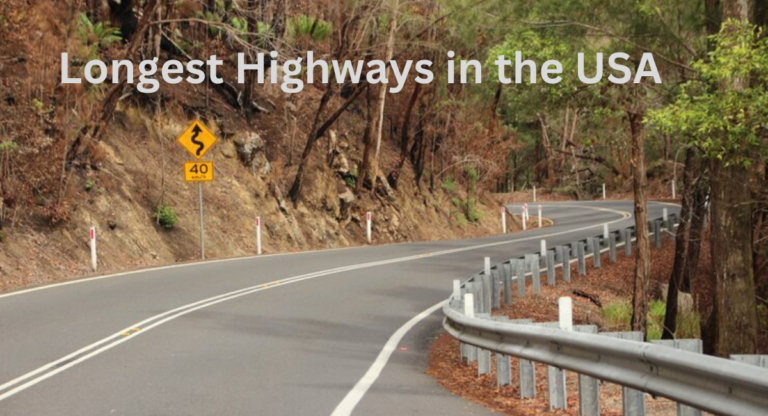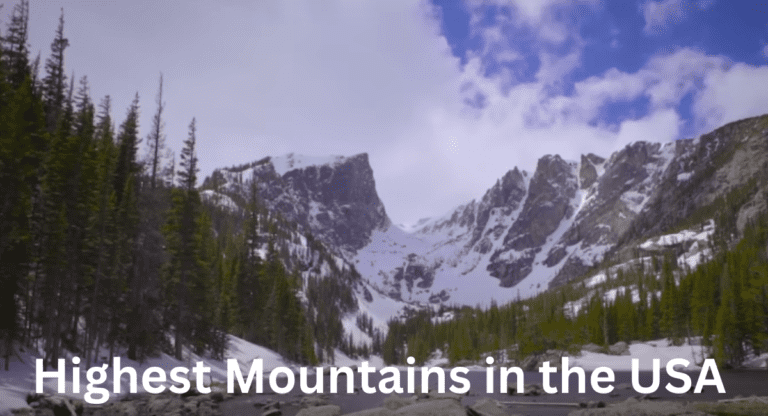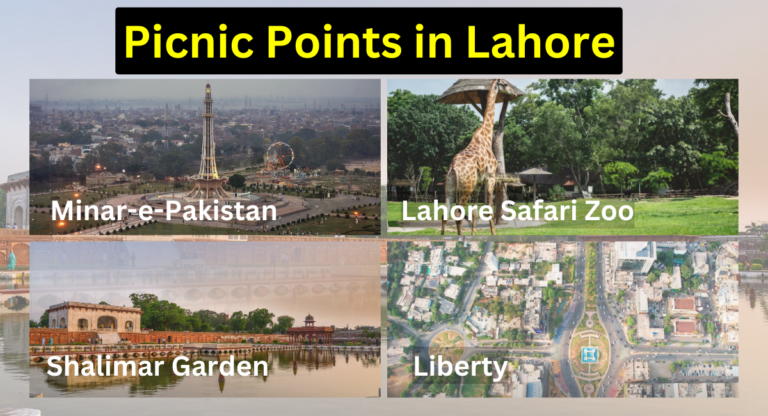11 Most Beautiful Places to Visit in Switzerland in 2024
Switzerland, the land of soaring peaks, pristine lakes, and charming villages, beckons travelers with its breathtaking beauty and endless adventure. Nestled amidst the majestic Alps, Switzerland offers a unique blend of history, culture, and outdoor activities. Whether you crave the thrill of skiing down a world-class slope, the serenity of a hike through wildflower-filled meadows, or the charm of exploring a medieval town, Switzerland has something for everyone.
This blog will cover some of the most beautiful Places to Visit in Switzerland.
List of Places to Visit in Switzerland
The following is the list of Places to Visit in Switzerland:
- The Matterhorn
- Jungfraujoch: The top of Europe
- Interlaken
- Lake Geneva
- Château de Chillon, Montreux
- St. Moritz
- Lake Lugano and Ticino
- Zurich
- The Rhine Falls
- Swiss National Park
1. The Matterhorn
The Matterhorn, a majestic peak straddling the Swiss-Italian border, is one of Europe’s most recognizable mountains. Its near-perfect pyramid shape, reaching 14,692 feet (4,478 meters), has captivated hearts for centuries.
Despite its iconic status, the Matterhorn isn’t the highest in the area. It ranks 10th in Switzerland and 12th in Western Europe. However, its dramatic structure and challenging climbs make it legendary. The first ascent in 1865 tragically claimed four lives, highlighting the mountain’s dangers.
Today, around 3,000 climbers attempt the summit each year, with most starting from the Swiss village of Zermatt. While challenging, the climb is achievable for experienced climbers with proper guides.
For less adventurous tourists, Zermatt offers a car-free paradise with stunning views. Hikers can explore trails with breathtaking panoramas, while cable cars provide access to viewpoints like Trockener Steg for unparalleled Matterhorn photos.
The Matterhorn’s fame extends beyond tourism. It’s the symbol of Toblerone chocolate, gracing its packaging since 1960.
So, whether you’re a thrill-seeking climber or an armchair admirer, the Matterhorn offers a unique blend of natural beauty, history, and cultural significance.
Also read: Safest Cities In The World
2. Zermatt
Nestled between the Swiss Alps, Zermatt is a car-free resort village famed for its postcard-perfect scenery and world-class skiing. At an elevation of 5,310 feet (1,620 meters), Zermatt boasts a year-round population of around 5,800, but that number swells with tourists drawn to its undeniable charm.
Zermatt’s history goes beyond tourism. Its name, derived from the German “zur matte” meaning “at the meadow,” reflects its agricultural roots. Until the mid-1800s, farming was the main activity. Then, mountaineers like Edward Whymper put Zermatt on the map with the first ascent of the Matterhorn in 1865. Tourism boomed, transforming Zermatt into the resort town it is today.
Today, Zermatt is a pedestrian paradise. Electric vehicles handle deliveries and transport luggage, keeping the air fresh and the streets car-free. Bahnhofstrasse, the main street, bustles with traditional shops, charming hotels, and enticing restaurants. Après-ski offers lively entertainment, while outdoor rinks provide opportunities for ice skating and curling.
But the true star of Zermatt is the Matterhorn. Towering over the village, this iconic peak is a magnet for skiers and hikers alike. Over 300 kilometers of pristine slopes cater to all skill levels, while summer offers a network of scenic trails. Cable cars whisk visitors up to viewpoints like Trockener Steg for breathtaking Matterhorn panoramas.
Whether you crave a thrilling ski descent, a peaceful mountain hike, or simply soaking in the alpine ambiance, Zermatt offers an unforgettable Swiss experience.
3. Jungfraujoch: The Top of Europe
Jungfraujoch, also known as the Top of Europe, isn’t just a catchy nickname – it’s a fact. Perched at a staggering 3,454 meters (11,332 ft), Jungfraujoch boasts the highest railway station in Europe. Nestled between the Jungfrau and Mönch mountains, it’s part of the UNESCO World Heritage Site Jungfrau-Aletsch, the first natural heritage site in the Alps.
Reaching Jungfraujoch is an experience in itself. The Jungfrau Railway, a marvel of engineering completed in 1912, takes passengers on a scenic cogwheel train journey that partly travels through tunnels carved within the Eiger and Mönch mountains. One stop even offers a glimpse of the glaciers outside through windows in the Eiger North Face.
Upon arrival, a high-alpine wonderland awaits. Snow and ice reign supreme, offering year-round activities. Explore the world’s largest ice palace, a labyrinth of sculptures and grottos carved from Jungfrau’s eternal ice. The Sphinx Observation Terrace, perched atop a ridge, provides panoramic views of the Aletsch Glacier, the longest glacier in the Alps, stretching towards Italy, France, and Germany. Thrill-seekers can try the Snow Fun Park with its snow tubing and sledding runs, or embark on a guided glacier hike.
Jungfraujoch also caters to the less adventurous. Relax in restaurants with breathtaking views, browse souvenir shops, or learn about the history and science of this unique environment at the High Alpine Research Station, the highest permanently manned research station in Europe.
Jungfraujoch offers a unique opportunity to experience a high-alpine world, blending breathtaking scenery, engineering marvels, and exciting activities, making it a must-visit for any Switzerland adventure.
4. Interlaken
Interlaken, nestled between the turquoise waters of Lake Thun and Lake Brienz in Switzerland’s Bernese Oberland, is a resort town that’s more than just a pretty face.
History buffs will find Interlaken’s charm originating in the 1800s. Back then, landscape paintings ignited a tourism boom, and festivals like the Unspunnenfest, showcasing Swiss culture, further solidified its popularity. Today, Interlaken thrives as a springboard for adventure and relaxation.
The town itself boasts a delightful mix of old-world charm and modern amenities. The Aare River winds through, lined with traditional timber houses and parkland. Bahnhofstrasse, the main street, bustles with shops, cafes, and restaurants.
Interlaken’s true calling card lies in its access to the surrounding mountains. Over 45 mountain railways, cable cars, and lifts whisk visitors up to breathtaking vistas and a paradise for outdoor enthusiasts. Summer beckons with a network of hiking and biking trails, while winter transforms the landscape into a skier’s and snowboarder’s playground. Lake Thun and Lake Brienz offer scenic boat tours, kayaking, and windsurfing for those seeking a watery adventure.
Interlaken caters to all budgets and interests. Whether you crave adrenaline-pumping activities, strolls along the lakes, or soaking up the mountain air, Interlaken offers a delightful blend of natural beauty, cultural charm, and endless opportunities for exploration.
Also Explore: Coldest Countries in the World You Must Visit Once
5. Lake Geneva
Lake Geneva, also known as Lac Léman by the French, is a majestic crescent moon nestled amidst the breathtaking scenery of Switzerland and France. Earning the nickname “Léman” from the Celts, meaning “large water,” it lives up to its name as the largest lake in the Alps by surface area. It spans over 580 square kilometers (224 square miles).
Remarkably, this vast expanse of water is shared by two countries: Switzerland holds the majority at 60%, while France lays claim to the remaining 40%. But Lake Geneva’s impressive size isn’t it’s only claim to fame. With a maximum depth of 310 meters (1,020 feet), it holds a surprising amount of water, making it a truly superlative lake. Perhaps most surprisingly, the region surrounding Lake Geneva boasts the mildest climate in all of Central Europe. This delightful combination of size, depth, and pleasant year-round weather makes Lake Geneva a magnet for tourists seeking a beautiful and versatile vacation destination.
For visitors to Lake Geneva, the options for exploration and enjoyment are endless. Charming towns like Lausanne, Montreux, Vevey, Geneva, and Evian-les-Bains all line the shores, each with its distinct personality, rich history, and architectural gems waiting to be discovered. Cruising the scenic waters is a quintessential Lake Geneva experience. Paddle steamers, historic boats, and modern ferries offer a variety of cruises, allowing visitors to soak in the beauty of the surrounding mountains, vineyards, and charming towns from a unique perspective.
For those seeking a more active experience, the lake itself becomes the playground. Public beaches in Lausanne, Montreux, and other towns beckon visitors to relax, sunbathe, and take a dip in the refreshing waters. Windsurfing, kitesurfing, kayaking, and stand-up paddleboarding are all popular activities, especially during the summer months.
Beyond the immediate lakeside attractions, the region offers even more. The UNESCO-listed Lavaux vineyards blanket the northern shores, offering not only breathtaking scenery but also delectable wine-tasting tours.
But Lake Geneva’s story goes beyond stunning scenery and exciting activities. The iconic Jet d’Eau fountain in Geneva, shooting water 140 meters (456 feet) into the air, is a must-see landmark and a popular spot for photos.
6. Château de Chillon, Montreux
Gracing the shores of Lake Geneva near Montreux, Château de Chillon is a magnificent island castle steeped in history and captivating beauty. This medieval masterpiece, over a thousand years old, has served as a stronghold, a luxurious residence, and even a state prison. Today, it stands as a popular tourist destination, offering a glimpse into a bygone era.
Construction of Château de Chillon began in the 12th century on a small islet, providing a natural defense against invaders. Over the centuries, the castle grew, incorporating various architectural styles that reflect its evolving purpose. From the austere keep to the grand halls adorned with frescoes, each section whispers tales of the families who called it home, the soldiers who defended it, and the prisoners who passed through its heavy gates.
For history buffs, a tour of Château de Chillon is a captivating journey. Explore the Great Hall, where dukes once feasted, and imagine the clinking of goblets and the murmur of courtly intrigue. The Duke’s private apartments offer a glimpse into aristocratic life, while the captivating chapel speaks of faith and reflection.
Château de Chillon isn’t just a history lesson; it’s a place to ignite the imagination. The castle’s dramatic setting on the shores of Lake Geneva adds to its mystique. Visitors can stroll along the ramparts, taking in the breathtaking views and feeling a connection to the past. Special events throughout the year, like historical reenactments and evening illuminations, bring the castle’s stories to life in a captivating way.
Also read: Museums In The USA
7. Moritz
St. Moritz is a world-renowned resort town nestled in the heart of the Swiss Alps, in the Upper Engadine Valley. Often referred to as the “Top of the World,” St. Moritz boasts not only a prestigious reputation but also a rich history and stunning natural beauty.
Surprisingly, St. Moritz’s fame began not with skiing, but with mineral springs. Discovered over 3,000 years ago, these springs were believed to have healing properties, attracting European nobility and establishing St. Moritz as a popular spa destination in the 17th century. In the late 19th century, winter sports enthusiasts discovered the area’s potential, transforming St. Moritz into the world’s first winter resort town in 1864. Ever since, St. Moritz has been synonymous with luxury winter holidays.
Summer paints the valley in vibrant hues, offering a paradise for hikers and bikers who can explore over 500 kilometers of scenic trails. The stunning lakes provide opportunities for boating, windsurfing, and stand-up paddleboarding. Golf enthusiasts can tee off on championship courses, while polo matches played on the frozen lake in winter are a truly unique spectacle.
St. Moritz is a place where elegance reigns supreme. The town is dotted with world-class hotels, designer shops, and Michelin-starred restaurants. Horse-drawn carriages add a touch of old-world charm, while sophisticated nightlife caters to those seeking an après-ski experience unlike any other.
8. Lake Lugano and Ticino
Nestled amidst the southern foothills of the Swiss Alps, Lake Lugano, and the surrounding Ticino canton offer a unique blend of Italian charm and Swiss efficiency. The heart of Ticino is Lugano, a vibrant city with a beautiful lakeside setting.
Ticino is Switzerland’s only Italian-speaking canton, and its heritage is evident everywhere you go. The architecture features a distinct Italianate style, with terracotta roofs and colorful facades lining the streets. The local cuisine boasts a delicious fusion of Swiss and Italian flavors, with fresh pasta dishes and lake-caught fish being specialties. Even the mild Mediterranean climate adds to the feeling of being in a sunny corner of Italy.
Lake Lugano, glacial in origin and shaped like a river winding through the mountains, is the crown jewel of the region. The towns and villages that fringe the lake offer a variety of experiences. Lugano itself is a bustling city with a beautiful lakeside promenade, historical sites like Castello di Lugano, and a vibrant cultural scene. For a quieter experience, explore the charming villages that dot the shoreline, such as Morcote, known for its car-free streets and architectural beauty, or Gandria, a hillside village offering stunning panoramic views.
Lake Lugano and Ticino offer a plethora of activities for visitors throughout the year. Hikers can explore a network of trails that wind through the mountains, offering stunning panoramic views. Water sports enthusiasts can kayak, sail, or windsurf on the lake’s pristine waters. Cyclists can take advantage of scenic routes that cater to all skill levels.
9. Zurich
Zurich, Switzerland’s largest city, is a vibrant hub offering a captivating blend of history, culture, and urban excitement. Nestled at the north end of Lake Zurich, with the Limmat River flowing through its heart, Zurich boasts a picturesque setting to match its dynamic energy.
Zurich’s history stretches back over 2,000 years. Founded by the Romans, the city thrived as a trade center and later became a prominent center for banking and finance, earning it the nickname “Bankfurt.” Zurich’s rich past is evident in its charming Old Town (Altstadt), a pedestrian-friendly paradise with cobbled streets, colorful buildings, and architectural gems like the Grossmünster cathedral and St. Peter’s Church, known for its large clock face.
While Zurich cherishes its heritage, it’s also a forward-thinking city. Bahnhofstrasse, the main avenue, is a shopper’s paradise lined with luxury brands and trendy boutiques. Art enthusiasts can explore world-class museums like the Kunsthaus Zurich, housing an impressive collection of modern and contemporary art, or the Ethnology Museum, showcasing cultures from around the globe. For a taste of Zurich’s vibrant nightlife, head to the trendy bars and nightclubs in the university district or the vibrant Schiffmühle quarter.
Traditional Swiss dishes like cheese fondue and raclette are a must-try, while trendy restaurants offer innovative takes on international cuisine. Don’t miss indulging in Zurich’s famous chocolates – Switzerland wouldn’t be Switzerland without them.
Zurich is an excellent base for exploring the surrounding region. The Uetliberg mountain offers stunning panoramic views of the city and the lake, accessible by a scenic train ride. For a touch of adventure, take a boat trip on Lake Zurich or explore the charming towns and villages that dot the shoreline.
10. The Rhine Falls
The Rhine Falls, Europe’s most powerful waterfall, is a majestic sight to behold. Located on the High Rhine River on the border between the cantons of Schaffhausen and Zürich, Switzerland, the falls are a popular tourist destination and a natural wonder.
The Rhine Falls were formed over 15,000 years ago during the Ice Age when tectonic shifts forced the Rhine River into a new course. The falls consist of two main cascades, separated by a central rock pillar. With a width of 150 meters (492 feet) and a drop of 23 meters (75 feet), the Rhine Falls are not the highest in Europe, but the sheer volume of water cascading over the falls – between 250 and 600 cubic meters per second – makes them a truly impressive spectacle.
Several viewing platforms allow visitors to get up close to the cascading water and experience the power of the falls. For a truly unique perspective, take a boat trip to the Felsenfahrt (Rock Tour) to the bottom of the falls.
The surrounding area offers additional attractions for visitors. The castles of Wörth and Laufen can be reached by boat, and for the more adventurous, canoe rentals are available. The historic town of Neuhausen am Rheinfall, located close to the falls, offers a variety of restaurants, shops, and hotels.
11. Swiss National Park
The Swiss National Park, a UNESCO Biosphere Reserve, is a haven for nature lovers and outdoor enthusiasts. Established in 1914, it’s the oldest national park in the Alps and Central Europe, boasting a strict nature reserve status. Located in the Eastern Rhaetian Alps, in eastern Switzerland, the park covers various terrains, from relatively low valleys to high peaks, with the highest being Piz Quattervals at an impressive 3165 meters above sea level.
Unlike many national parks, human intervention is strictly limited here. There are no permanent settlements or roads within the park boundaries. This minimal human influence allows the park’s flora and fauna to thrive in a natural state.
The park is home to a lot of wildlife, including ibex, chamois, red deer, foxes, martens, marmots, and a variety of bird species, including eagles and other game birds. If you’re lucky, you might even spot a bearded vulture, which has been successfully reintroduced to the park. The park is accessible from several villages, including Zernez, S-champ, Scuol, and the Fuorn Pass.
Conclusion
These were the most beautiful Places to Visit in Switzerland. So, lace up your hiking boots, pack your sense of adventure, and get ready to discover the magic of Switzerland! From the snow-capped peaks to the crystal-clear lakes and charming villages, Switzerland offers an unforgettable experience that will leave you yearning to return.
FAQs
Is Switzerland a Cheap Place to Visit?
Switzerland is well-known for being an expensive country to visit. But, with smart planning, you can still enjoy its beauty on a budget.
In Which Month Switzerland Is Cheapest?
October and November offer the best deals. Hike stunning mountains, and explore charming towns, all with fewer crowds. You can book your trip in these months and enjoy Switzerland before the winter rush.
Which Month Is Coldest in Switzerland?
Across Switzerland, the coldest weather typically hits between December and February. January usually takes the crown as the most frigid month at most weather stations.

I’m Sophia Jones, an adventurer at heart from New York City, USA. I live for travel and exploration, always eager to discover new places, meet fascinating people, and try out diverse cuisines. Over the past few years, I’ve traveled to numerous countries, immersing myself in different cultures and creating unforgettable memories.






